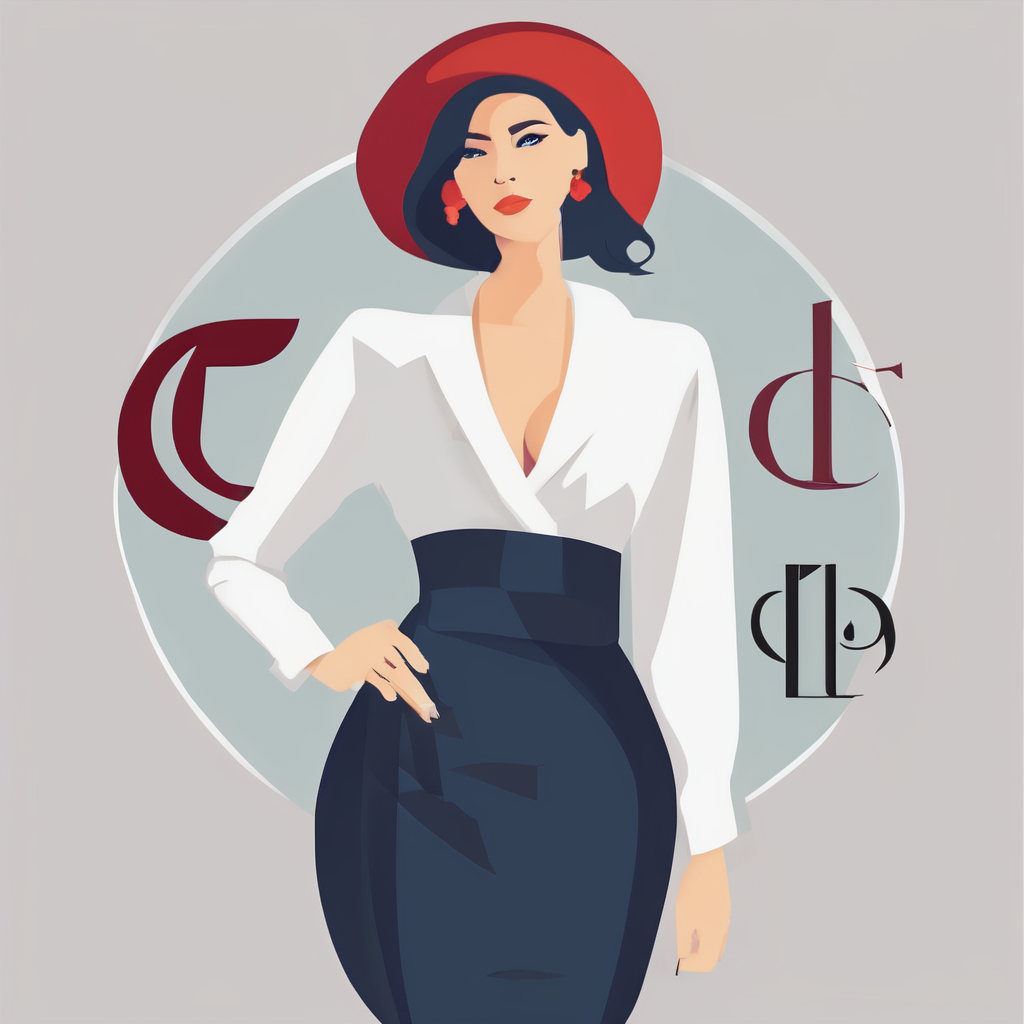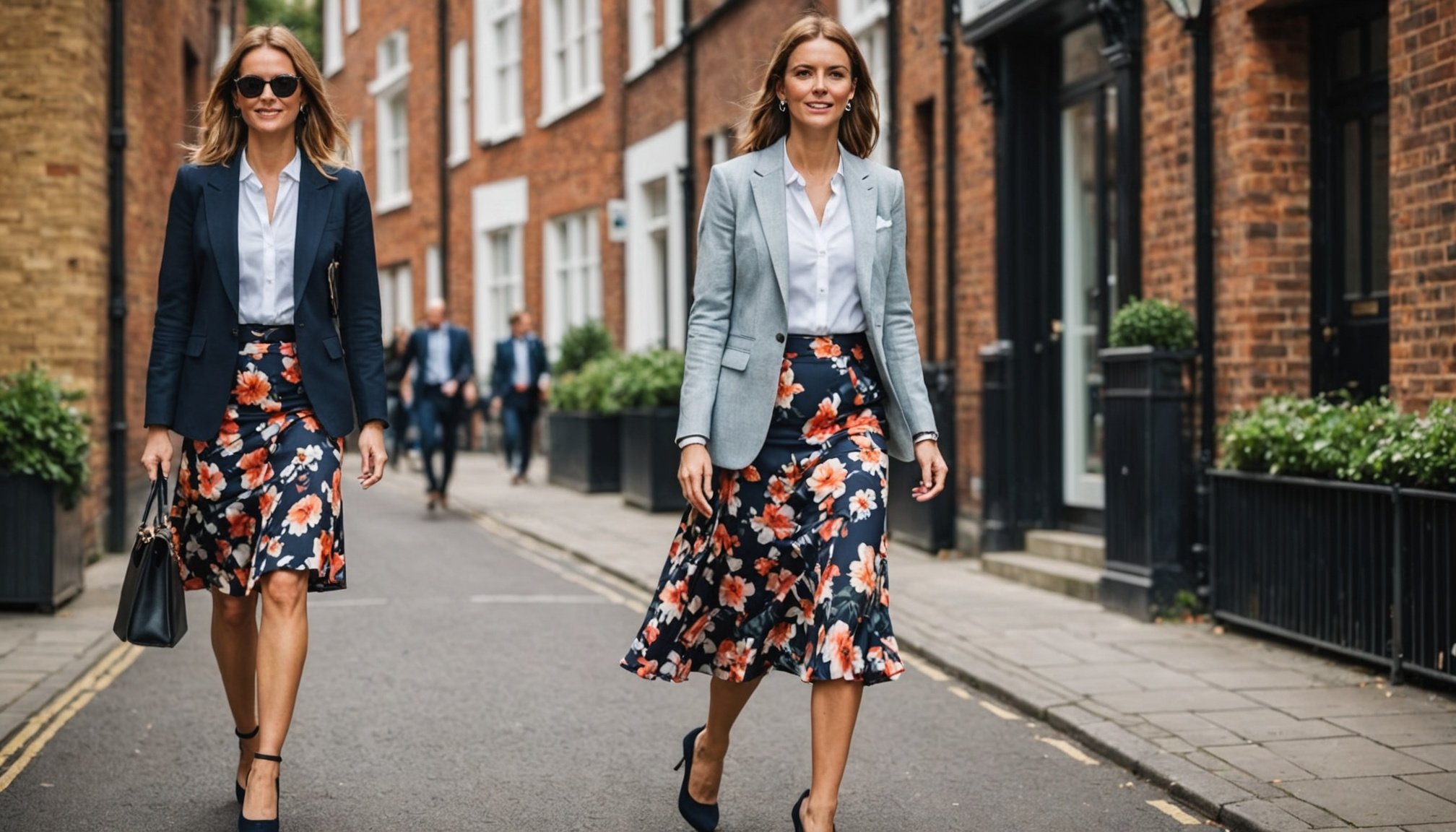Combining Floral Skirts with Blazers
Integrating floral skirts within an office setting can be a stylish yet professional choice. Key to achieving this balance is selecting floral skirts with subtle patterns and muted tones, ensuring they resonate with the formal environment. Blazers come into play as versatile accessories, perfectly complementing floral patterns. Achieving harmony requires careful attention to the blazer’s color – opting for shades that either match or complement the skirt’s hues is advisable. Structured blazers can add a layer of sophistication and formality to your look.
Fit and silhouette are fundamental in crafting a polished ensemble. Ensuring your floral skirt sits well around your waist can prevent an outfit from feeling bulky. Moreover, choosing a blazer with a tailored fit can accentuate your shape, offering a cohesive and chic appearance. Remember, when blazer sleeves are just the right length and shoulders fit snugly, it accentuates the elegance of the entire outfit.
Also to discover : Transform Your Summer Dress: Perfect Accessory Tips for an Unforgettable Day at the Edinburgh Fringe Festival
Combining floral skirts and blazers can result in a fresh and modern business look. By focusing on patterns, color harmonies, and the silhouette’s fit, a professional look that respects office dress codes can easily be achieved. Explore these options and see how they can add flair to your work attire.
Color Coordination Techniques
Color coordination is pivotal for achieving professional looks. It involves understanding how different hues can complement or contrast with each other, affecting the overall aesthetic.
Additional reading : Revolutionary Textile Innovations Redefining the Future of Women”s Fashion in the UK
Choosing Complementary Colors
Complementary colors sit opposite each other on the color wheel and can create a striking balance. For instance, pairing a deep navy suit with a subtle orange tie strikes an eye-catching yet harmonious balance. When exploring color matching, remember that the objective isn’t to clash but to create visual interest that accentuates professional attire.
Neutrals vs. Bold Colors
Neutrals serve as a foundation, providing a clean slate that allows bolder colors to shine. A charcoal grey suit can be the perfect base for a vivid red shirt, creating an assertive yet refined appearance. Opting for neutrals doesn’t mean being plain; it’s about providing versatility and balance to bold elements.
Seasonal Color Trends
Adapting to seasonal color trends, like pairing floral patterns with solid blazers, can keep your workplace wardrobe fresh. Spring might call for lighter pastels, whereas autumn favors deeper earthy tones. Integrating these trends requires understanding color theory—how colors naturally pair, such as warm tones for vibrancy in colder months.
Incorporating these color coordination techniques ensures your attire remains fresh and professional, encouraging confidence in every ensemble.
Accessorizing for Office Fashion
Accessorizing is key to crafting a compelling office look that reflects professionalism and style. The right footwear can instantly elevate an outfit. Selecting comfortable and stylish shoes is crucial for those long workdays. For a polished appearance, consider classic pumps or sleek loafers, which offer both elegance and practicality.
Jewelry and bags play substantial roles in office fashion. A statement necklace or a pair of elegant earrings can transform an understated ensemble into a stunning one. When choosing a bag, opt for one with clean lines and a structured shape to maintain a professional image. A well-coordinated bag not only completes your look but is functional enough to carry your work essentials.
Accessorizing also includes thoughtful use of scarves and belts. A scarf can add a pop of color or texture to an otherwise simple outfit, while belts accentuate your silhouette and add interest to a dress or high-waisted trousers. If you wish to refresh your daily look, consider experimenting with different colors and patterns with these accessories.
Incorporating these elements into your wardrobe ensures you not only look the part but feel confident stepping into the office each day.
Seasonal Adaptations of the Look
Transitioning office wardrobes throughout the year requires understanding seasonal office fashion nuances. As each season has distinct demands, maintaining both comfort and style is essential.
Spring and Summer Styles
In warmer months, lightweight fabrics like linen and cotton become indispensable. These materials ensure breathability, preventing discomfort. For instance, a linen blazer paired with a silk blouse can create an airy yet polished look. Opt for pastels and soft hues to reflect the lightness of the season, adding scarves or jewellery for a feeling of elegance.
Transitioning into Autumn
Autumn introduces opportunities to play with layering techniques. Consider combining blazers with skirts, where you maintain sophistication. Choose wool or cashmere to keep warm during chilly mornings. Incorporating neutral shades can highlight accent pieces like a bold, patterned scarf or statement bracelet that stands out.
Winter Layering Techniques
Winter challenges office fashion with immersing demands for warmth. Selecting textured fabrics such as tweed or velvet can enhance your ensemble’s visual appeal. Layer blazers over fine-knit sweaters for added insulation. Accessories, including tailored gloves or a vibrant handbag, can inject personality while serving practicality.
Throughout the year, a coherent strategy and a focus on fabric, colour, and accessories are key to achieving seasonal office fashion success.
Examples of Stylish Outfits
Exploring a range of office outfit inspiration featuring floral skirts can be both exciting and practical for diverse professional settings. Incorporating these skirts as a centerpiece not only adds a touch of elegance but also aligns with current fashion trends, offering an updated look for the workspace environment.
Floral skirts can be styled effortlessly with tailored blouses for a polished appearance. Opt for a button-down shirt in neutral tones to complement vibrant floral patterns. Add a structured blazer for a look that exudes confidence yet remains fashion-forward.
For a more relaxed office atmosphere, consider pairing a floral skirt with a cashmere sweater. This combination marries comfort with style, especially suitable for a creative workspace. Choose ankle boots as footwear for a modern twist that stays true to office-appropriate guidelines.
On casual Fridays, embrace a playful vibe by matching a floral skirt with a tucked-in white t-shirt. Adding a denim jacket can transition the look from day to evening seamlessly, perfect for after-work gatherings.
Each stylish combination highlights floral skirts’ versatility, encouraging professionals to incorporate fashion trends without compromising on office decorum. These visual references serve as a guide, simplifying the task of outfit replication and enhancing wardrobe creativity in workplace settings.











